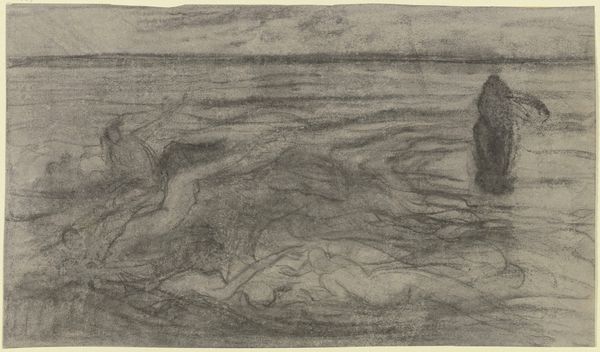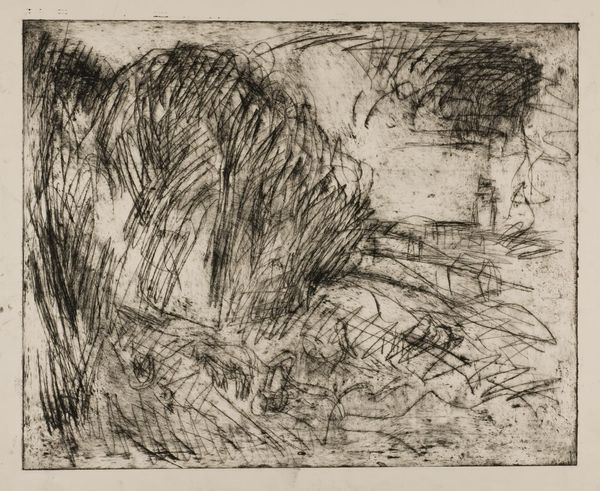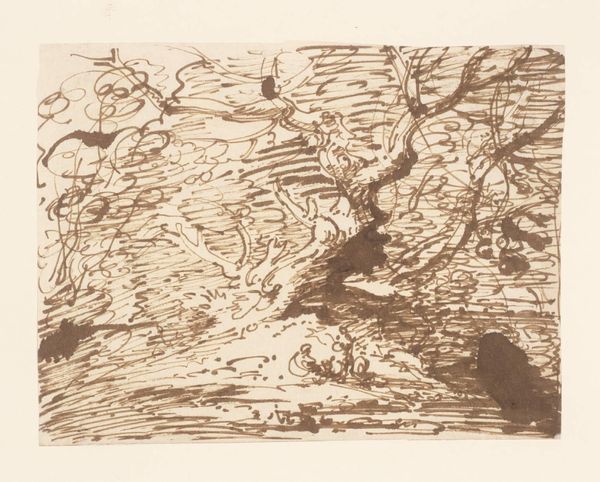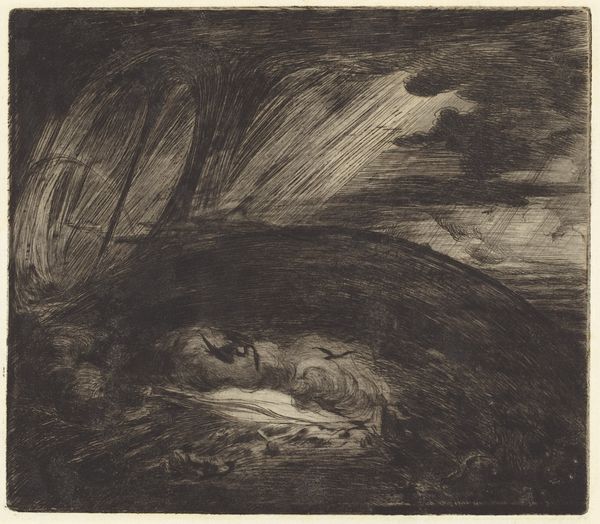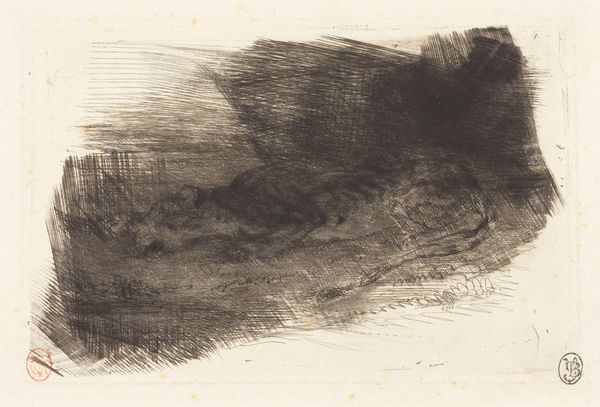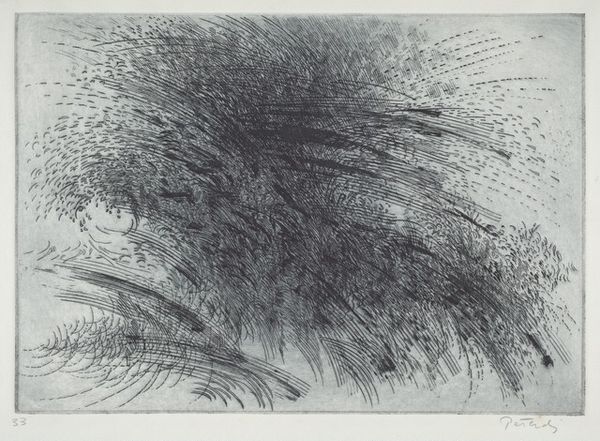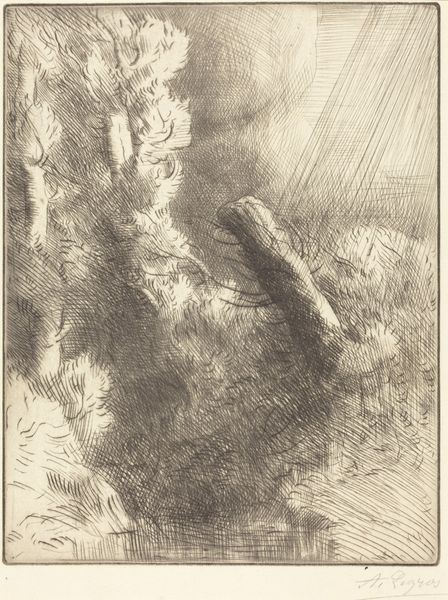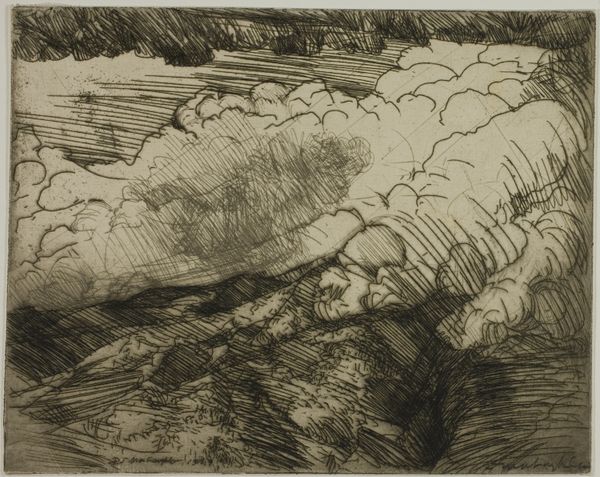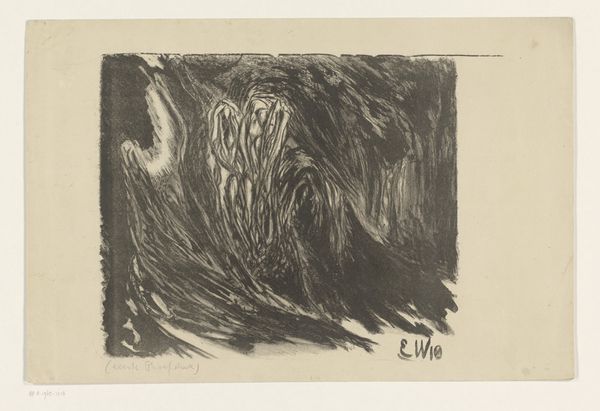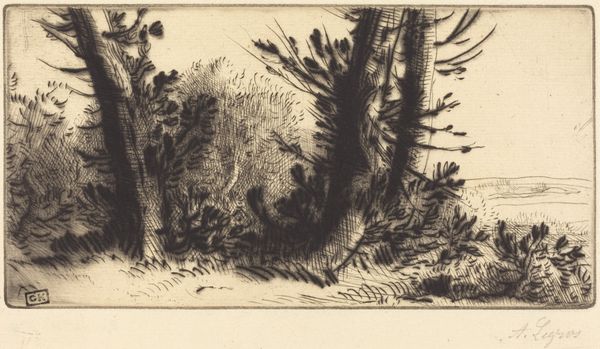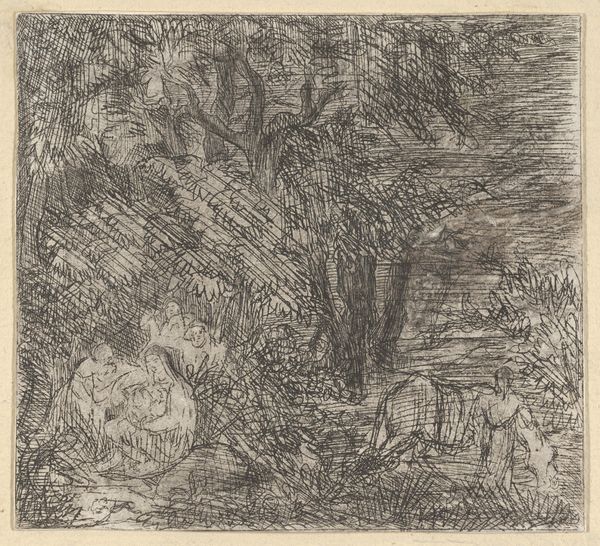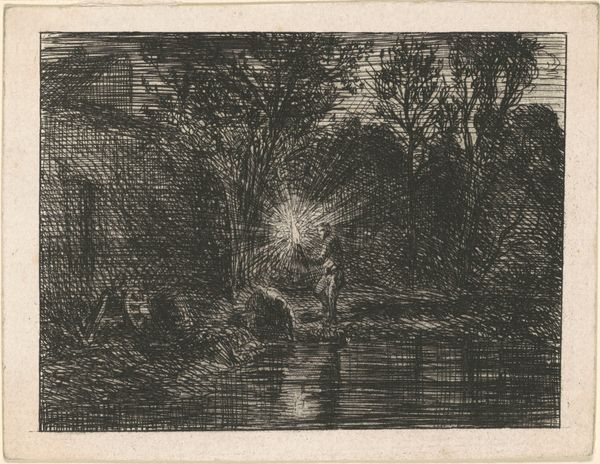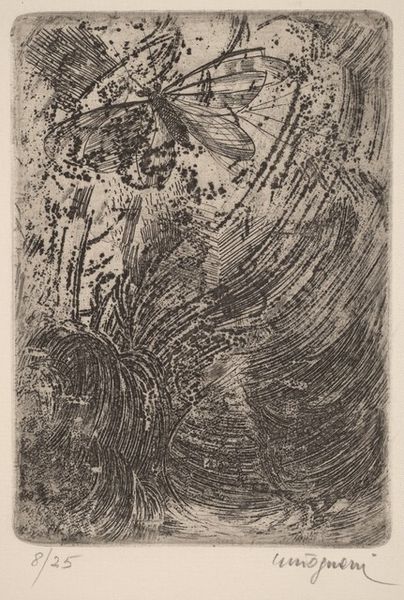
print, etching
#
natural shape and form
# print
#
etching
#
old engraving style
#
landscape
#
genre-painting
#
realism
Dimensions: height 72 mm, width 110 mm
Copyright: Rijks Museum: Open Domain
Curator: Let's delve into "Landschap met wilgen en figuur," a landscape created through etching in 1844 by Charles Jacque. What are your first impressions? Editor: It’s remarkably intense for a pastoral scene. The frenetic energy in the lines gives it a palpable sense of unrest. Is it about a storm, perhaps, or societal upheaval projected onto the land? Curator: It is interesting you say that. This etching was crafted in a time of great transformation across Europe and beyond, specifically influenced by Realism. Etchings like these catered to a growing market of collectors interested in accessible art reflecting their immediate world. Genre painting became a way of life portrayed realistically for everyone, by showing nature. Editor: I can certainly see elements of realism there, in the depiction of rural life, but it’s more than just documenting the physical world, isn't it? There is an undeniable melancholy woven through its visual texture that asks deeper questions. I can see it in the composition and its scale. The deliberate positioning of that lone figure invites introspection on man’s role within nature. How much has his labor changed this very piece of land we are looking at? Is he taking away from it, or living in synergy with it? Curator: Well, at the time it wasn't about living "in sync", as society's need to advance left little time for that kind of romantic thinking. Instead, many focused on production for an expanding audience during an agricultural depression with a society in economic distress. It seems important to also focus on how this was a reproduction medium—printmaking—for art democratization, moving it from exclusive ownership by aristocracy to availability for everyone during periods of intense socioeconomic disruption and philosophical questions related to the rise of new forms of economic distribution and, effectively, different levels of freedom and labor division. Editor: Absolutely, it reminds us to critically examine art's role as both a mirror reflecting socio-economic shifts and also a participant that could affect change and be shared by wider groups. It is a testament to both the past and future's complex, messy realities that go into artistic interpretation. Thank you for shining the light! Curator: My pleasure, by considering art's history as a form that shapes our perceptions about labor, wealth distribution, and cultural expression. This is the lens for which our world of today is to be examined as we keep moving forward.
Comments
No comments
Be the first to comment and join the conversation on the ultimate creative platform.
